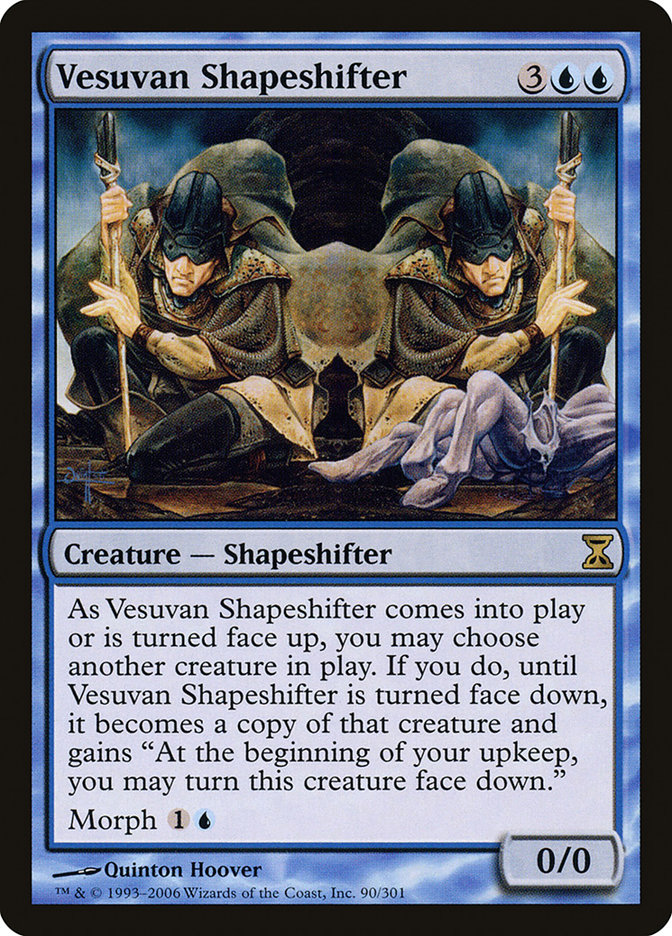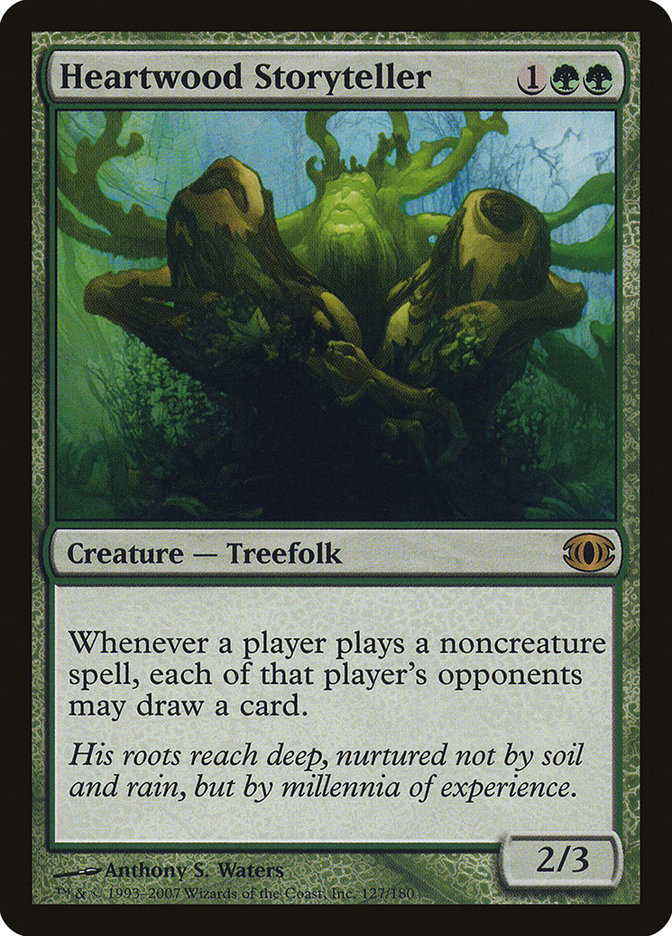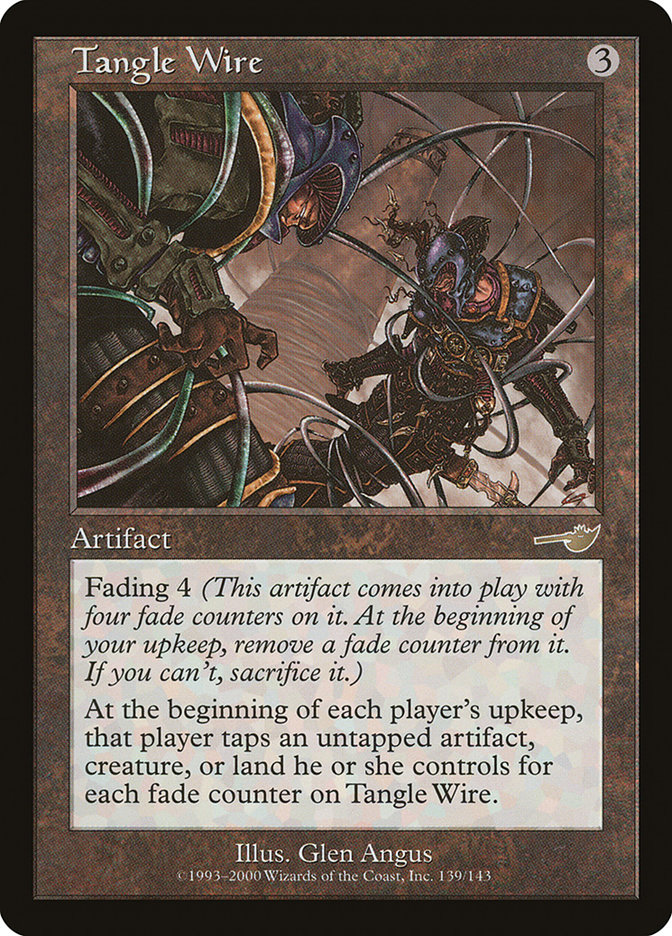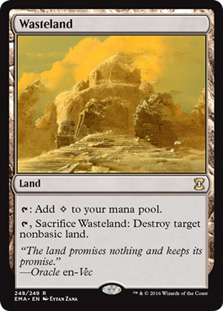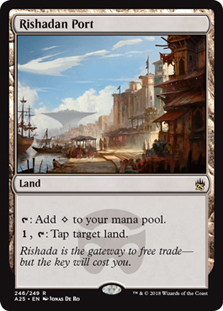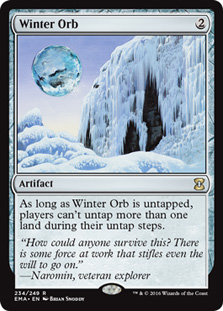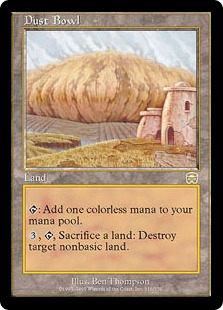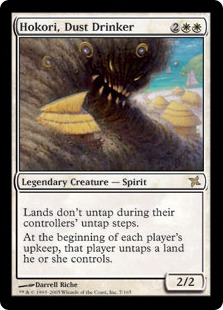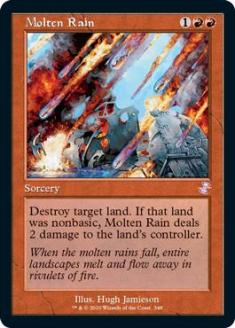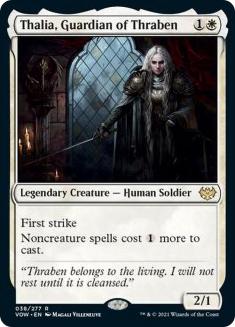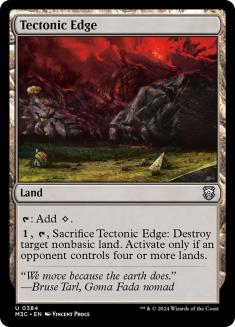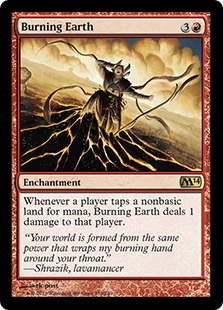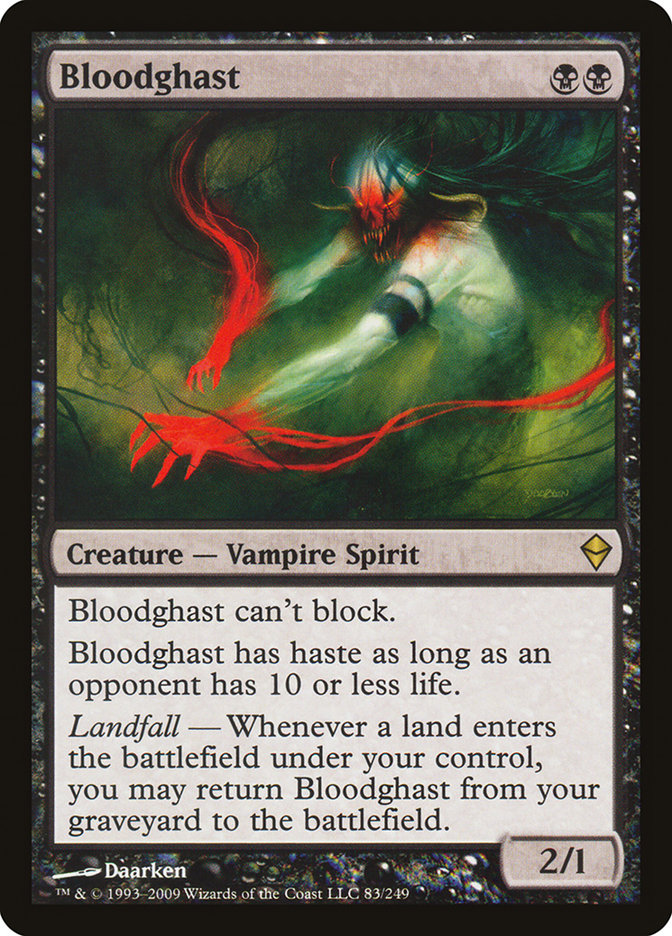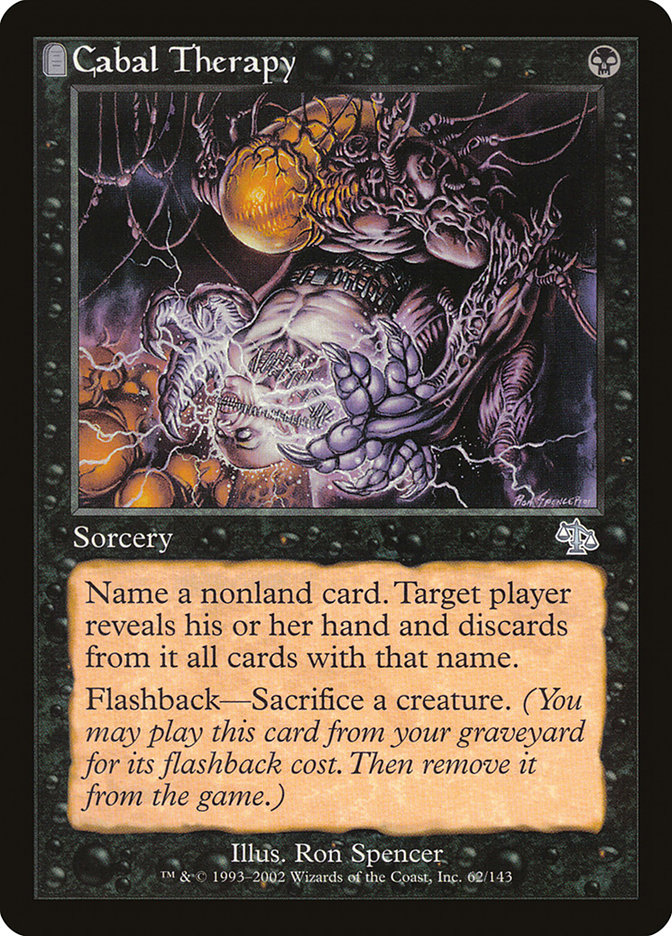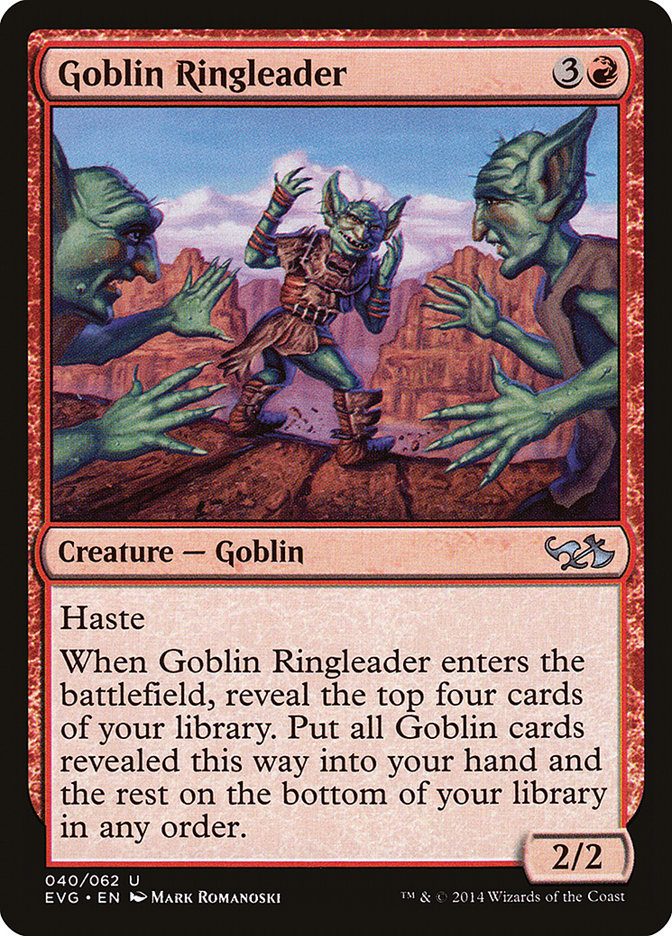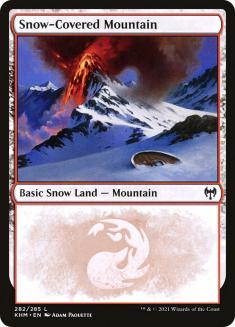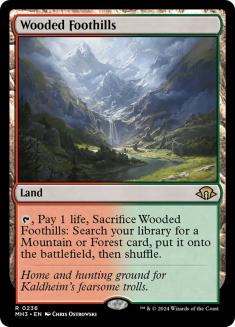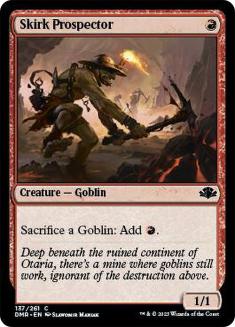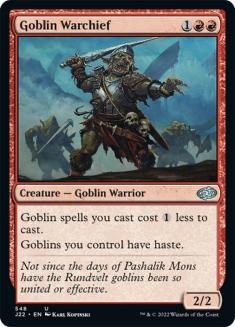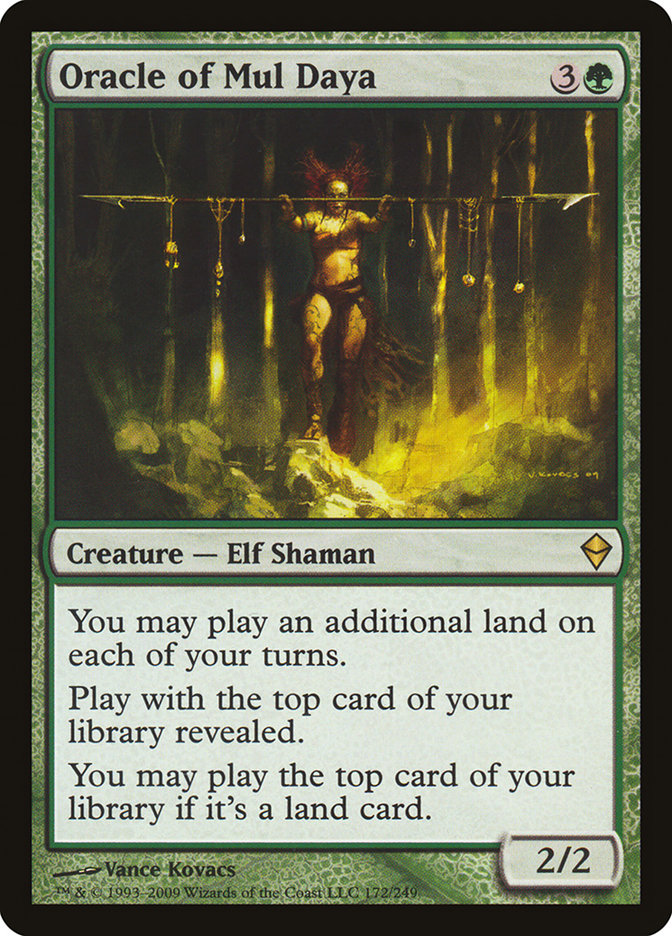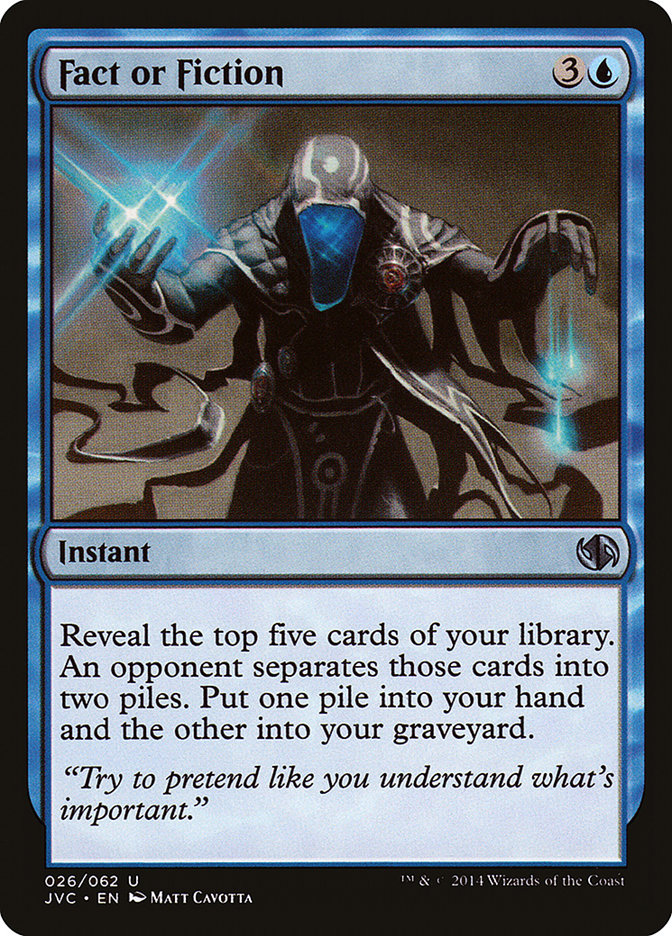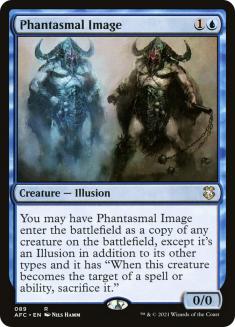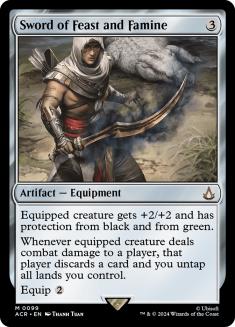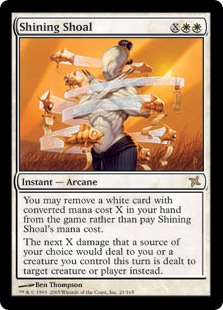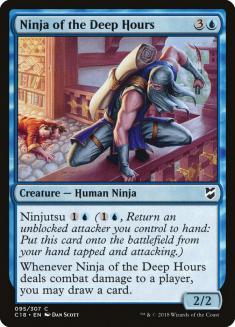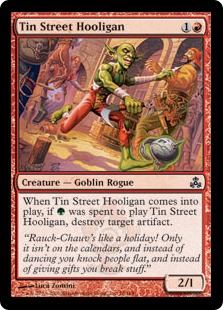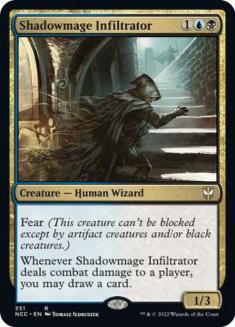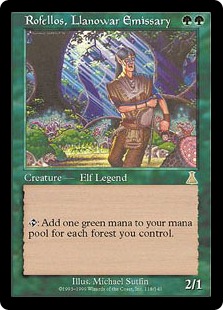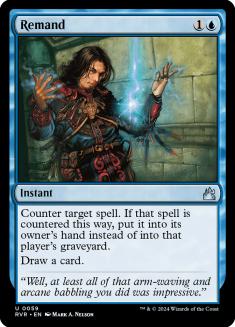Magic has been serious business for the last year and a half. The grind has been real, and I spent 44 out of 52 weekends last year battling, with some
midweek IQs thrown in for good measure. We kept rolling right along this year, but after locking up Season One, I finally get a chance to take a deep
breath and relax.
I love tournament Magic, but it feels great to be able to step back a bit and remember what makes the game so fun. Today, let’s take a look back at my top
8 favorite cards of all time.
8th Place – Vesuvan Shapeshifter
Quite a few cards ended up missing top 8 on breakers, but sneaking in at eighth place is my favorite Clone effect of all time, Vesuvan Shapeshifter. While
not as cheap as Phantasmal Image or as flexible as Phyrexian Metamorph, Vesuvan Shapeshifter presented you with so many options that playing it was always
an adventure.
Maybe we were casting it face up to copy a Mulldrifter and draw two? Flipping it up as a Tarmogoyf to block their Tarmogoyf and crack back? Or my favorite,
flipping it in our upkeep after the discard trigger to copy a Razormane Masticore before the draw step trigger, leaving us with a Razormane Masticore with
no drawback for the turn? Yep, that happened.
When Vesuvan Shapeshifter was legal in Standard I was playing a lot of Magic and would use FNM to brew up wacky decks every week. One of my favorites was a
G/U Heartwood Storyteller deck:
Creatures (37)
- 4 Llanowar Elves
- 4 Birds of Paradise
- 1 Willbender
- 2 Razormane Masticore
- 4 Wall of Roots
- 4 Ohran Viper
- 4 Riftwing Cloudskate
- 4 Vesuvan Shapeshifter
- 4 Heartwood Storyteller
- 2 Venser, Shaper Savant
- 4 Mulldrifter
Lands (23)

While this decklist is definitely just an approximation–the original has been lost to the sands of time–this deck was a blast to play.
Heartwood Storyteller is such an awesome card that never really found a good home, but it draws you a ton of cards. Because the deck was 37 creatures and
everything was on the board, you would get into very interesting, complex gamestates, and Vesuvan Shapeshifter is at its best in these.
Creatures (12)
- 3 Shadowmage Infiltrator
- 1 Teferi, Mage of Zhalfir
- 2 Triskelavus
- 3 Vesuvan Shapeshifter
- 2 Aeon Chronicler
- 1 Venser, Shaper Savant
Lands (26)
Spells (22)

On the more competitive side, Vesuvan Shapeshifter was a major player in Time Spiral Block Constructed. While often used in conjunction with Brine
Elemental to form the “pickles” lock, it was also used other places. I used it as a major piece in my U/B/x Mystical Teachings control deck to take down a
PTQ, and it did everything from giving me extra Shadowmage Infiltrators to copying my opponents’ Avalanche Riders.
While not really good enough for any Eternal formats and outclassed in Cube by Phantasmal Image, I will always have a soft spot for the trickiest of
Shapeshifters.
7th Place – Grim Lavamancer
When you think of the best Mono-Red Aggro cards, typically they are so single-minded that they really can only do one thing: Lava Spike. Firedrinker Satyr.
Foundry Street Denizen. Goblin Guide. Hellspark Elemental. All these cards have a singular purpose, and while they were staples in their respective red
decks, none could ever ascend to anything else.
Not Grim Lavamancer.
Grim Lavamancer has been a staple card in any format it has been legal in for almost fifteen years. While as a red one-drop it is primarily used in
aggressive decks, its power level is so high that it can hold it’s own in Delver of Secrets decks as well as Burn decks.
Creatures (15)
Lands (20)
Spells (25)

Grim Lavamancer is awesome because it is an aggressive burn card that also provides limitless card advantage at such a low cost. Aside from being one of
the best cards in Burn, it also pops up all sorts of places.
Creatures (13)
Lands (23)
Spells (24)
- 4 Sleight of Hand
- 4 Serum Visions
- 3 Remand
- 1 Into the Roil
- 3 Dispel
- 4 Splinter Twin
- 3 Gitaxian Probe
- 2 Izzet Charm
Sideboard

It’s not often you see a card from Burn decks providing a complementary role in a combo deck, but much like Lightning Bolt, Grim Lavamancer is just so
powerful and versatile it is capable of that and so much more.
6th Place – Tangle Wire
Interestingly enough, Tangle Wire is the only card on this list that I have not played extensively in tournaments. In fact, I don’t think I’ve ever
actually cast it in a sanctioned event.
So why does it make the list?
I mean, have you ever actually played a Tangle Wire? It’s like the best feeling ever. (Right, Cedric?) [CEDitor’s Note: Hashtag #truuuuuuuuu] You
play a few creatures while your opponent tries to keep up, and then Tangle Wire shows up and slams the door on them.
Tangle Wire is awesome because it is a pure tempo card. It is inherently card disadvantage since it doesn’t actually add anything to the board or your
hand, but the tempo it creates is often game-winning. There are very few cards like Tangle Wire these days, which is somewhat understandable as they can be
frustrating to play against, but I miss cards that keep you honest.
It’s good to have checks and balances, and punish people who are trying to be too greedy. Playing around cards like Wasteland and Armageddon is very
challenging, but also very rewarding.
These are definitely more fair versions of these cards, and I hope to see more of them in the future. Cards like these help aggressive decks keep up with
all the powerful midrange threats, and if you know me, you know I hate midrange decks.
5th place – Bloodghast
Bloodghast is a card that has always been on the edge. While it was one of the best cards in the aggressive Vampire deck back in Standard, it feels like it
never really reached its full potential.
While the body is small and weak, the effect is so extraordinarily powerful that it really had to be. Bloodghast is a creature you get to play for free
over and over again, and all you have to do is get it into your graveyard somehow – which is not especially difficult.
Creatures (12)
Lands (24)
Spells (24)
- 1 Umezawa's Jitte
- 1 Demonic Tutor
- 3 Entomb
- 4 Cabal Therapy
- 1 Skullclamp
- 1 Demonic Consultation
- 2 Chrome Mox
- 1 Life from the Loam
- 4 Smallpox
- 4 Thoughtseize
- 2 Maelstrom Pulse
Sideboard

If all Bloodghast did was just come back after attacking a bunch, it would be fine, but what makes it so good is how it interacts with effects that want
you to sacrifice cards either in play or in your hand. As long as you have some lands to play, Bloodghast is a never ending string of creatures to feed to
whatever you see fit. Smallpox, Cabal Therapy, and Viscara Seer were popular ones in Constructed, but Bloodghast is also one of my favorite Cube cards.
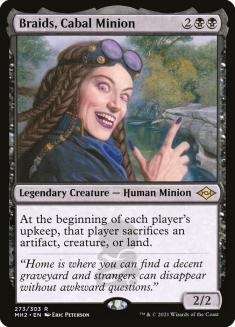

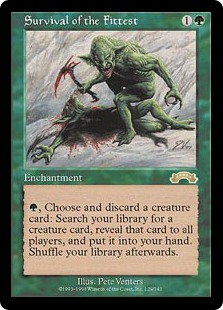
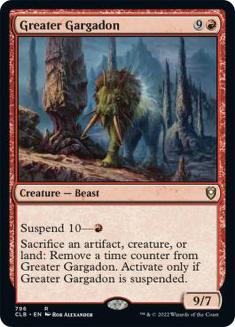

Have you ever experienced the pleasure of sacrificing a Bloodghast to Braids, Cabal Minion every turn? How about Smokestack? Or maybe finding it with
Survival of the Fittest and pitching it for something sweet?
Bloodghast is not the most powerful card ever printed, but the amount of fun things you can do with it is almost endless.
4th – Cabal Therapy
After all the talk about Bloodghast, it’s only fitting that our fourth-place card is Cabal Therapy.
I love Cabal Therapy.
Very few cards force interesting choices like Cabal Therapy does. While yes, Thoughtseize is better in a vacuum, Cabal Therapy is a far more interesting
and fun Magic card.
Cabal Therapy requires true skill to use properly. You must understand the format, what decks are in the format, and then what cards are important for each
deck. You must be able to quickly deduce what your opponent is playing, and then use the information gleaned from the current gamestate to assess what your
opponent may have in hand. You must be able to decide if your opponent is likely to have the card or not, and it gives you a chance for the soul-read.
It gets even more fun when your opponent plays a Brainstorm in response to your Cabal Therapy. Did they tuck the important cards on top of their deck so
you couldn’t take them? Or did they assume that you would no longer name their important card for that exact reason and leave it in their hand?
There aren’t enough cards in Magic like Cabal Therapy.
I’m working on a Cabal Therapy deck in Legacy, hopefully you will see it in a top 8 soon.
3rd – Goblin Ringleader
This one had to be somewhat predictable, but the truth is that Goblin Ringleader is just an amazing Magic card.
Creatures (36)
- 4 Goblin Matron
- 1 Goblin King
- 4 Goblin Warchief
- 1 Sparksmith
- 1 Goblin Sharpshooter
- 4 Goblin Piledriver
- 4 Gempalm Incinerator
- 1 Siege-Gang Commander
- 4 Goblin Ringleader
- 4 Skirk Prospector
- 4 Goblin Sledder
- 1 Goblin Pyromancer
- 3 Goblin Legionnaire
Lands (21)
Spells (3)
Sideboard

One of the problems that linier creature decks have is that very often their individual parts are not very powerful. Nobody is playing Skirk Prospector or
Goblin Piledriver in anything but a deck with tons of Goblins in it. Because of this, it is often difficult to obtain critical mass. A hand like this…
…isn’t really doing a whole lot. But once you throw a card like Goblin Ringleader into the mix, the deck starts to be able to snowball and really pull
together.
Synergy decks are meant to be more than the sum of their parts, and powerful effects like Goblin Ringleader allow synergistic decks like Goblins to put
together more of these parts and assemble their cards in the right places.
What’s important is that cards like Goblin Ringleader are powerful, but only super powerful if your build your deck to maximize them. This creates decks
that end up being well-oiled machines rather than a bunch of good cards just crunched together, and that’s the kind of Magic I like to play.
I want more cards like Goblin Ringleader in Magic.
2nd – Oracle of Mul Daya
One of my favorite strategic concepts in Magic is ‘velocity,’ which is how fast you can get deeper into your deck. I also love drawing cards and having a
ton of lands in play, so it really is no surprise that one of my favorite cards ever is Oracle of Mul Daya.
Sure, Courser of Kruphix gains you some life here or there and has a bigger butt, but playing two lands a turn means you are not only drawing a spell
pretty much every turn but that you also have a ton of lands to work with. In a vacuum, Courser of Kruphix might be better, but we don’t play Magic in a
vacuum.
Creatures (13)
Planeswalkers (4)
Lands (27)
Spells (16)
Sideboard

This is definitely one of my favorite decks ever. It’s hard to explain how awesome having any combination of Oracle of Mul Daya, Lotus Cobra, and Jace, the
Mind Sculptor in play is without actually experiencing it for yourself. Oracle of Mul Daya was the high octane of that trio, pounding land after land into
play while triggering your Lotus Cobra over and over again and resetting your Jace brainstorms.
Creatures (13)
Lands (28)
Spells (19)

While the actual list has been lost forever, this is a pretty close approximation to what I played at Pro Tour San Diego 2010. While I didn’t finish great
with the deck, I was very happy with the list and the work I put into it. I decided to just overload the deck with removal, and then use the combination of
Oracle of Mul Daya and the full set of eight manlands to keep me drawing gas and eventually win the game later. Oracle was awesome because I would never
flood and it would even help me set up cascades.
I’ve played me a lot of Oracle of Mul Daya in my day, and it’s a card I would love to see in Standard again.
1st Place – Fact or Fiction
Despite my love for many of the cards on this list, none of them can compete with Fact or Fiction.
Fact or Fiction has it all. Power level, instant speed card draw, graveyard synergies, but most of important of all is the difficult decisions it forces
your opponent to make.
When you play a Dig Through Time, you have a lot to think about. It requires you to know what you need to handle the present situation and what you are
going to need in the future to handle problems that haven’t presented themselves yet. When you play a Sphinx’s Revelation LOL just draw a fist full of
cards and gain a ton of life – that was easy.
In both scenarios, however, your opponent just sits there and watches, impatiently when you are resolving Dig Through time and dejectedly when you are
resolving Sphinx’s Revelation.
Not so with Fact or Fiction.
Now it is your opponent who is put to the test, and they in turn must put you to the test. Fact or Fiction is one of the most interactive spells ever
printed while simultaneously being a very powerful card draw spell as well. There are ample opportunities for all sorts of mind games- like casting a Fact
or Fiction in response to a spell like you are looking for a counterspell, only to take the better pile with no counterspell because you already have the
counterspell in your hand.
Spells (34)

While most of Fact or Fiction heyday was before my time, I did get to enjoy playing it in a few Extended decks back in the day. It is also one of my
favorite cards to first pick in Cube Drafts.
Magic needs more cards like Fact or Fiction – cards that are very interactive but also very powerful and really put players to the test.
Missed on Breakers:
There were definitely some great cards that heartbreakingly missed making the list on tiebreakers, but they still get tons of love as part of my Cube. Now
that I have a bit more time to relax as far as Magic goes, I can start cubing again, and I’m going to put together a Cube compendium over the next few
weeks going over my entire Cube and the philosophies behind it- something I have been looking forward to doing for a while and that I’ve received numerous
requests for.
But for now, what are your top 8 cards of all time?
Don’t be shy. Share!
#MyTop8Cards

